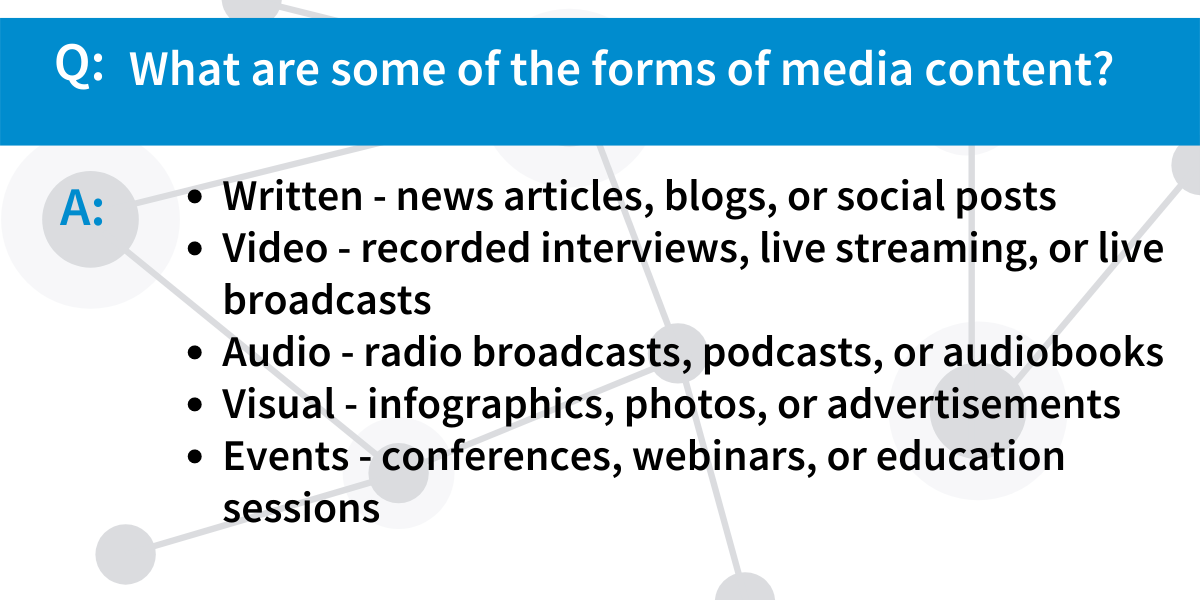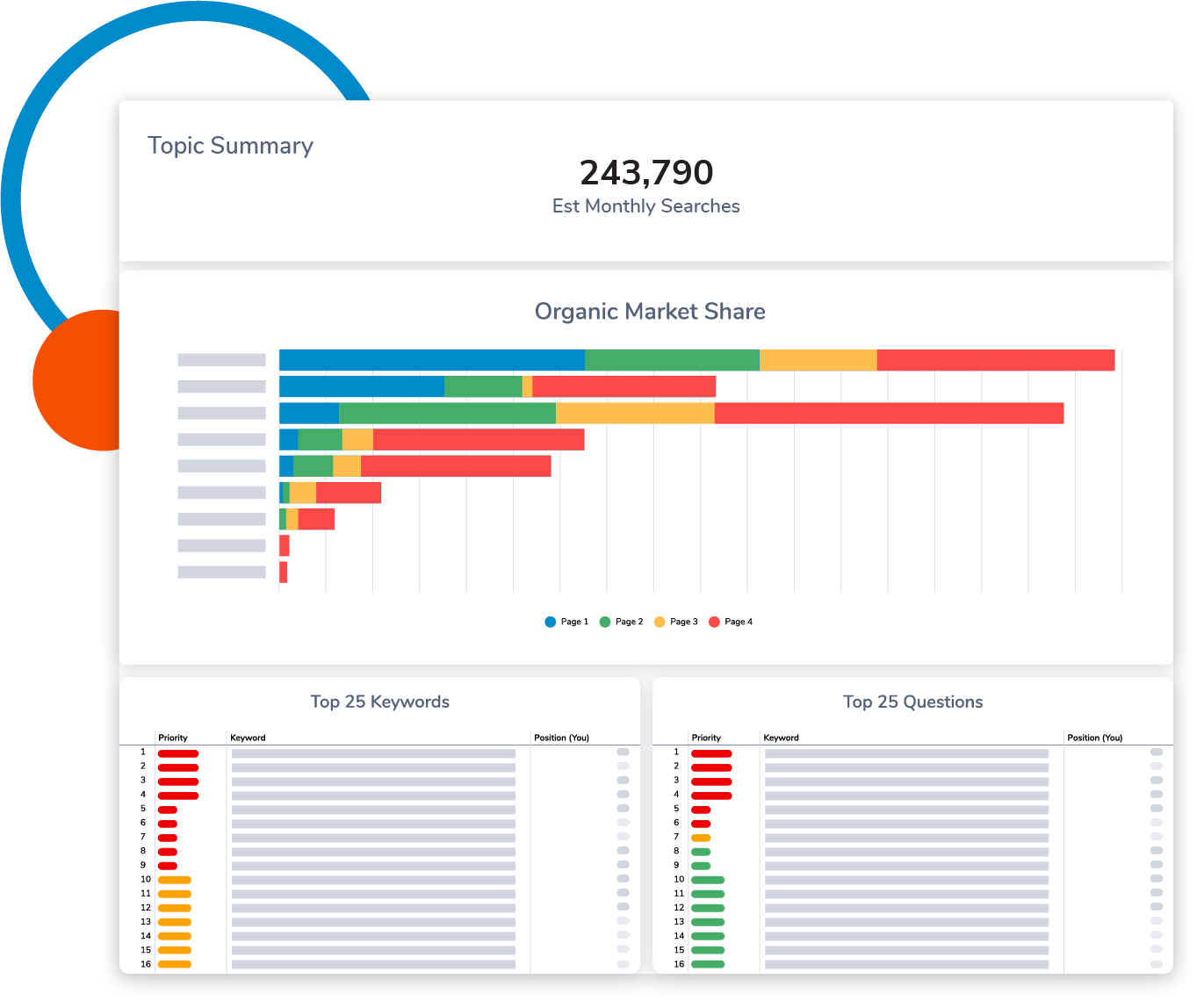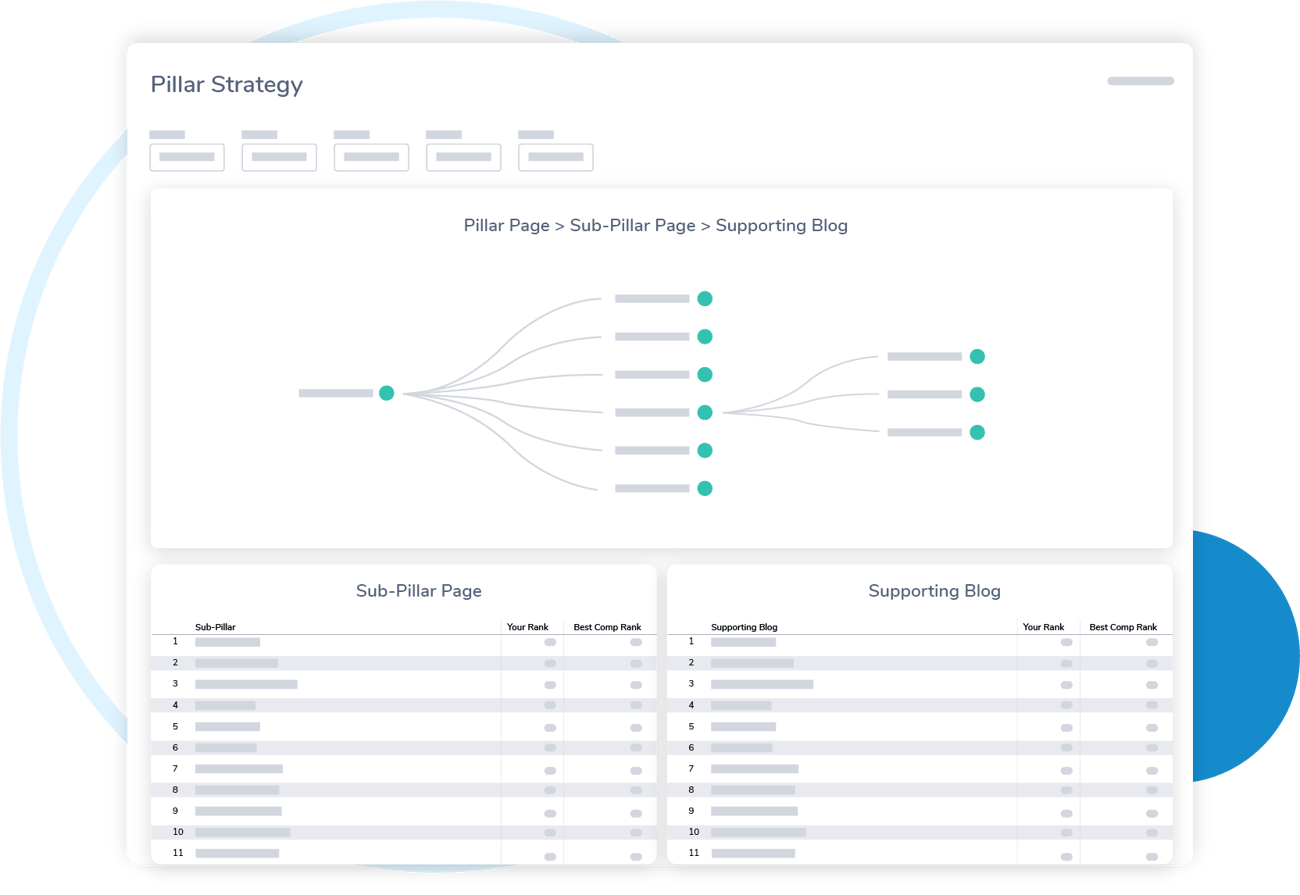Whether it’s news media or social media, citizens worldwide definitely have less-than-positive beliefs about the media in general. Only 29% of people around the world believe that the news covers topics that are relevant to them, and around 40% believe the media is more negative than it needs to be.
As far as social media, users experience a range of emotions when they log on to these channels. When Pew Research Center surveyed social media users about how they feel, they got a wide spectrum of responses. In order of popularity, these were: amused, angry, inspired, connected, depressed, and lonely.
As a marketer, when someone describes your content marketing, you probably want to hear some of those words, but certainly not all of them. Emotions like anger, depression, and loneliness are the opposite of what most brands want to be putting out in the world. So how can a marketer enter into this complicated environment with confidence, and avoid the pitfalls of trust that can compromise a brand position? Let’s talk about content marketing, media, and social media, and provide some information that can help you develop your unique strategy to be a positive force on social media.
What is the Definition of Media?
Does it surprise you to learn that “media” is the plural form of “medium?” This doesn’t refer to clothes of a specific size, but instead the different methods, or mediums, by which information is shared.
Whether it’s news, entertainment, education, promotional messages, or other data, there have never been more forms of media than there are today. Newspapers, radio, faxes, and billboards are supported (and in some cases replaced) by email, television, phones, mobile devices, and the Internet. Pretty much every part of the Internet has become a medium for communicating information—making it media.
What is Content in Media?
Content is the information that makes media relevant. If the content isn’t good, the media isn’t good. No one wants to open a newspaper or web page and see an empty page, or filler text with no meaning. These errors are only one step removed from repetitive content, that doesn’t tell the reader or viewer anything new. While information might be new to a consumer at first, if you keep telling them the same thing over and over with no new additions, they won’t keep paying attention. A third pitfall for content is inaccuracy, which tells consumers the wrong information or misrepresents a situation. Over time, this means a source will be less-trusted and marketing won’t achieve its goals. These expectations for media are why fresh, entertaining, and accurate content is the cornerstone of a successful media channel or online marketing presence.
For an example of how important content is to media, consider a traditional medium: broadcast news. Major national news networks often run the same stories 24/7 in a cycle. Eventually, viewers become aware that they are listening to the same facts over and over and often change the channel. PEW Research reports that social media and news websites, followed by radio, have all become more popular news sources than broadcast news. This is because when the facts change in a relevant way, people can get real-time updates faster from other sources.
But at the same time, for local news, television broadcasts are still a preferred and trusted source. Local news differs because it only airs at certain times during the day. Also, viewers know when they tune in, they will be likely to hear updates and information that are specifically relevant to their area and community.
Content in media is all about information, but it can take a variety of forms. Here are some of the forms of media content we are all familiar with and experience regularly:
- Written Content: news articles, blogs, and social posts are some of the most common written media.
- Video Content: recorded interviews, live streaming, and live broadcasts are some of the ways video content is used in media.
- Audio Content: radio broadcasts, podcasts, and audiobooks are examples of audio content in media. Voice search is also rising in popularity.
- Visual Content: infographics, photos, and advertisements are common and popular visual media that shares information or entertainment with users.
- Events: virtual or in-person events like conferences, webinars, and education sessions are media that shares information with attendees.
In all these forms of media, the goal is to transfer information, share understanding, and inspire emotion among the readers, listeners, viewers, or attendees. Whoever your audience is, stay focused on what you want them to walk away with.

What Does Content Mean in Social Media?
With all this understanding of the media now behind us, it becomes easier to understand a social media marketing definition. Social media is itself a channel just like broadcast news or the radio. But what makes it unique from all the other channels is that the users and audiences are the ones determining what is shared on the channel. Each user has their own presence, with your unique Facebook profile or Twitter handle putting you in the same position as a radio DJ or news anchor.
Content marketing on social media is then about creating and posting content from your channel that others will share on their channels. Useful, appropriate, and trustworthy content will attract a following and ideally motivate your audiences to do business with your brand.
One element that is especially important on social media is creating visual content for social media, or video content. Posts with images perform better on average than those without, to the extent that posts with images are now preferred in a lot of social media algorithms.
All social media channels, like Facebook, Twitter, Instagram, LinkedIn, or Pinterest, have algorithms that determine what content each individual user will see. As you try to have your marketing content compete for visibility on a social feed, it’s important to use every advantage you can deduce about these systems to get your content to the top by proving it has value. Common metrics that show content is valuable on social media include:
Engagement using reactions such as the like, love, or wow face.
Shares as your audiences repost your content on their own channels.
Comments and replies to comments, showing the post has inspired discussion.
Ultimately, content on social media represents the means for the socialization, or community, to occur. Whatever content you are choosing to put on social, it’s important that it inspires a reaction or conversation and has value to your audiences. That could be educational value, entertainment, or both!
What Type of Content is Best for Social Media?
Getting on any social media channel reveals just how competitive the online content environment really is. This leads many marketers to wonder how to do social media marketing the best. The truth is that every type of content can be good for social media, depending on the content itself, and the channel you choose to promote it. Let’s examine how each type of content performs on social media, and some of the specific traits that make each popular social media channel better or worse for specific kinds of content.
Types of Content Marketing Media for Social
- Photos: Posts with photos get more engagement than those without images. Some posts can use stock photography or designed graphic, while announcements or reviews about your business could use actual photos of your workplace or team.
- Videos: Videos could include pre-produced videos, live streaming events, or stories. Videos designed for business awareness or lead conversion should be a minute or less, while more educational videos or live streams could be as long as 3-4 minutes and remain effective.
- Infographics: Many people think of infographics as long and scroll-able, but even turning one data point into a graphic can make for a great social share. Infographics help consumers retain information better over long periods of time, and if the design is great, they might want to share it too.
- Blogs: Sharing links to your blog content on social media is a great way to drive traffic to your website. Make sure you have compelling titles and images, and that both the metadata and accompanying social post engage the reader and make them want to know more. After all, they will be leaving the social channel to follow your link.
- Curated Links: You don’t just have to share links to your own content, though. In fact, sharing links to news stories and other industry-relevant content is a strategy to establish your brand as a trusted resource. The links you choose can also be a subtle way to reinforce your company values as you share messages that are important to you. Just make sure you aren’t driving traffic to your competitors!
- eBooks: Like blogs, sharing links to your eBooks or white papers on social media is a way to get them in front of more users. These shares may need to be considered with strategic timing. If you post a long piece of content at 10am on a Tuesday, it might not be likely that your audiences will have time to engage right then.
- Reviews: Reviews can manifest on social media in a number of ways. Some channels like Facebook and LinkedIn allow users to leave reviews of your brand and share testimonials. Asking satisfied customers to leave reviews is a way to help potential customers get encouraged to make a purchase decision. As part of a greater social strategy, you could even turn portions of these reviews into videos or social posts. In those cases, it’s a best practice to get the permission of the reviewer first.
- Stand-Alone Posts: Not every post has to drive to a link or piece of content elsewhere. Stand-alone posts, like status updates, give a brand a sense of humanity and can seem less like marketing than other options on the list. Sharing statistics, observations, or announcements about the company are some ideas for writing posts.
- Contests: Hosting contests on social media is a great way to drive consumer engagement and raise brand awareness. Remember that most contests have a prize! This could be an hour of your services, a product you want to promote, or prizes you’ve collected from other brands that you want to promote, like small local businesses. If you link the contest to a special occasion like a holiday, a business milestone, or even achieving a certain number of social followers, it will feel more organic.
Facts About Different Social Channels
- Facebook:
- 1.62 billion users visit Facebook daily. (Pew Research)
- The fastest-growing demographic on Facebook are individuals age 65 and older. Only 50% of US teens age 13-17 use Facebook. (QZ)
- Only 10% of Facebook users are in North America, but 48% of Facebook’s ad revenue comes from North America. (Facebook)
- The highest traffic times on Facebook are mid-day Wednesday and all day Thursday. (Sprout Social)
- Instagram:
- Instagram is the second-most used site after Facebook, with 60% of its 1 billion users logging in daily. (Pew Research)
- Over half of Instagram’s users are younger than age 34, and it’s the second-most preferred app for teenagers in the US. (Statista)
- Instagram generates an estimated 30% of parent company Facebook’s ad revenue, with international user base expected to surpass the United States user base in the next few years. (Vox)
- Instagram users say the platform most often helps them discover new brands and research buying decisions for goods and services. (Facebook)
- YouTube:
- An average one billion hours of video are watched on YouTube every day. Music videos are the most popular content. (YouTube)
- From 2017 to 2018, there was a 2x increase in watch time for videos about which products to buy. (ThinkWithGoogle)
- 48% of marketers are investing in YouTube advertising, with pre-roll skippable ads voted the most effective type of ad. (PPC Hero)
- Over 90% of shoppers have discovered a product or service through YouTube. (ThinkWithGoogle)
- LinkedIn:
- LinkedIn has over 660 million users, with around 40% accessing the platform daily. (LinkedIn)
- 70% of LinkedIn’s users are outside the United States, though half of all college-educated adults in the US use LinkedIn. (Pew Research)
- Only 3 million LinkedIn users, around 1%, share content weekly. Employees are 14x more likely to share content from their employer than any other source. (LinkedIn, AccuAgency)
- LinkedIn is the source of more than 50% of the traffic for B2B websites and blogs. (Sumo)
- Twitter:
- There are 340 million Twitter users, with 22% of US adults using Twitter. 38% of those US Twitter users are between the ages of 18-29.(Pew Research)
- Twitter users are 38% more likely to post opinions about brands or products than users on other channels. (Twitter)
- 85% of small and medium businesses use Twitter for customer service as well as marketing. (Twitter)
- People spend 26% more time viewing ads on Twitter than other platforms, but the platform experienced a 22% drop in advertising revenue as of Q2 2020. (Twitter)
- Pinterest:
- Pinterest has 440 million users and counting, with roughly half the users outside the United States. 28% of all US social media users are on Pinterest. (Statista, Pinterest)
- 90% of users who are on the platform weekly have made buying decisions on Pinterest. (Pinterest)
- Pins that show someone using a product or service are 67% more likely to drive offline sales, while pins that promote a special offer lead to a 61% increase in email conversions. (Pinterest)
- 90% of users love Pinterest because it is “filled with positivity,” while 64% describe it as a place to find products and services they can trust. (Pinterest)
- Snapchat:
- 230 million people use Snapchat every day. As of March 2020, 4 billion snaps were created and sent on a daily basis. (Snapchat)
- 82% of Snapchat users are age 34 or younger, and primarily use the app for messaging, not news. (Hootsuite, Snapchat)
- Over 75% of Snapchat users engage with augmented reality features like filters, including branded augmented reality. (Snapchat)
- 35% of users send Snaps about products they are interested in buying. 65% post to their story after purchasing a product. (Murphy Research)
- TikTok:
- TikTok has 800 million active users, and has spent 5 consecutive quarters as the most-downloaded app in app stores across platforms. (Datareportal, Sensor Tower)
- 41% of global TikTok users are age 16-24, with US adult users growing by 5.5 times in the last 18 months. (Oberlo)
- 35% of TikTok users have participated in a hashtag challenge, and 64% have tried face filters or lenses. (TikTok)
- TikTok guarantees 5 million daily impressions for brand takeover ads that display as the app opens, and ranks sixth for consumer spending among social media apps worldwide. (TikTok, AppAnnie)
These data points can certainly help marketers identify which social media channels are the homes to your target audiences, and will be most friendly to the different types of content you can create.
Creating a Social Media Content Strategy
An effective social media content strategy succeeds through a combination of planning and adaptability. Here are some of the steps to go through as you plan how to distribute your content marketing on social media:
- Identify Goals: First, decide what you want to achieve with social media. Is it increasing brand awareness, building consumer trust, or actually improving sales? The goals you set will determine not only which channels you should prioritize, but the type of content you should create to share on those channels.
- Create a Calendar: Once you know what you want to achieve, plan out the content you will share to reach the goals. For brand awareness, maybe you want to have a contest or series of videos. Building trust might mean you plan to emphasize customer reviews. Improving sales could mean an advertising campaign or special offer. Whatever your strategy, it’s important to plan it in advance to stay consistent and make good on the vision.
- Set a Budget: Along with the calendar, set a budget for your campaign. Some platforms cost more than others to promote your posts or other content, so do your research and make sure to adapt the strategy if your budget is a limitation. There is always a workaround, so don’t let finances compromise your goal!
- Plan for Analysis: Lastly, as you execute the strategy it’s important to track in real-time how your content is performing and if your goals are being realized. This is where cross channel analytics or other marketing ROI best practices come into play.

DemandJump created our platform with the goal to make both the beginning and ends of a social media strategy easier. As you start out trying to decide what content audiences are looking for, our customer insights reveal the questions and keywords you need to prioritize to get the attention of social media users. We even integrate competitor insights to let you know what pages are currently winning traffic so you can decide on unique formats or content positioning to make your marketing stand out.
Then, our cross-channel analytics functionality draws in performance data from all your social media platforms, to reveal which channels are performing best and what content is driving engagement. This allows for real-time decision making about advertising spending, as well as where you might want to jump into the conversation and build community with your audiences.
Lots of target audiences have a complicated emotional relationship with the media and marketing. But the strategic thinking that helps your marketing break through those barriers and make your message heard doesn’t have to be as complex. Sign up for a free trial of DemandJump and experience the insights that will help you form better and more authentic relationships with existing and potential customers.












